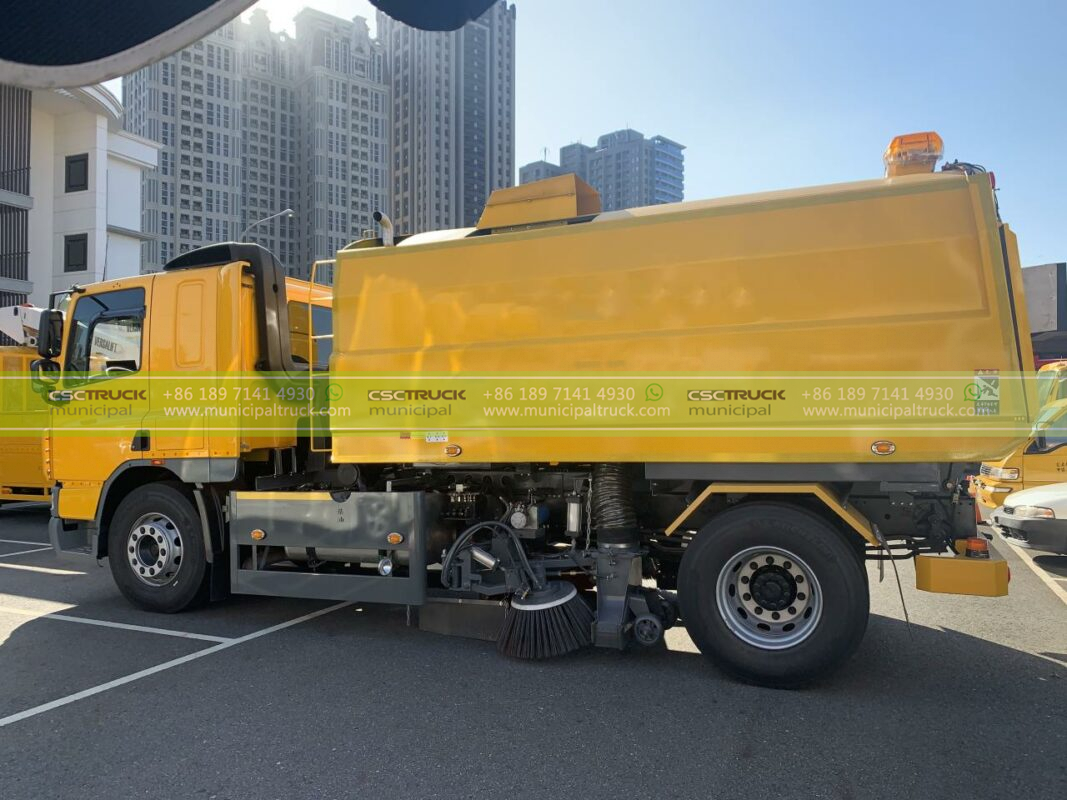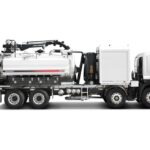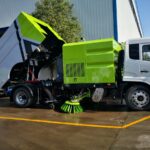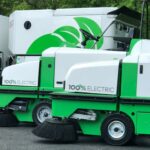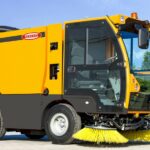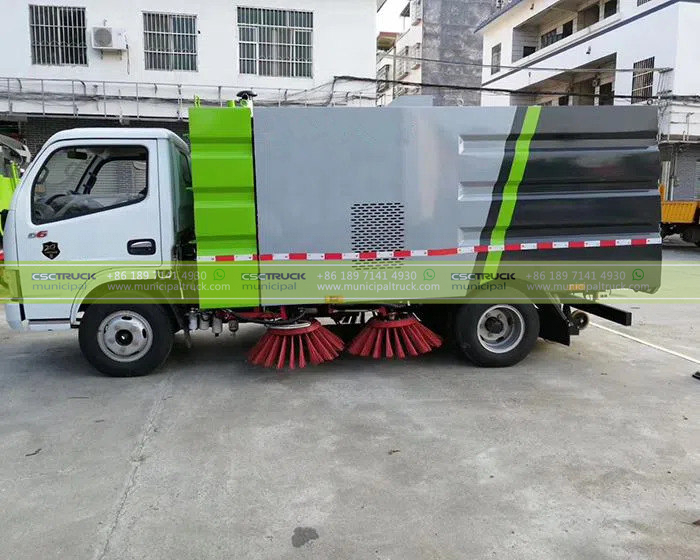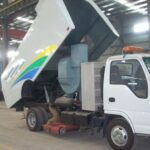In the realm of urban infrastructure maintenance, efficiency and effectiveness are paramount. As cities expand and populations grow, the demand for innovative solutions to keep streets and drainage systems clean becomes increasingly pressing. Enter the Combined Sweeper Jetter Truck, a technological marvel that offers dual cleaning solutions and revolutionizes maintenance practices. This article explores the capabilities, benefits, and potential impact of these versatile vehicles on modern urban environments.
The Evolution of Street Maintenance: A Dual Approach
Traditional street maintenance involves the use of specialized vehicles for various tasks. Street sweepers are used to remove debris, litter, and dirt from road surfaces, while jetters are employed to clean and unclog drainage systems. These separate processes have now converged into a single, unified solution: the Combined Sweeper Jetter Truck.
This innovative vehicle merges the functionalities of both a street sweeper and a jetter, allowing municipalities and cleaning crews to tackle 2 critical tasks simultaneously. Equipped with advanced technology and engineering, these trucks integrate sweeping brushes, powerful suction systems, and high-pressure water jets, creating an all-in-one package for comprehensive urban maintenance.
The Power of Dual Cleaning Solutions
The Combined Sweeper Jetter Truck offers a range of benefits that extend beyond the obvious convenience of a dual cleaning approach. Firstly, it significantly reduces the time required for maintenance operations. Traditionally, street sweepers and jetters would need to operate separately, often causing disruptions to traffic flow and urban activities. With the combined truck, these tasks are executed concurrently, minimizing disturbances and enhancing overall operational efficiency.
Secondly, the integrated approach leads to a cleaner and more hygienic urban environment. By addressing both surface-level debris and subsurface drainage issues in one pass, the truck ensures that streets not only look clean but are also free from potential blockages that could result in flooding or water accumulation. This is particularly crucial in preventing waterborne diseases and preserving the structural integrity of roads and drainage systems.
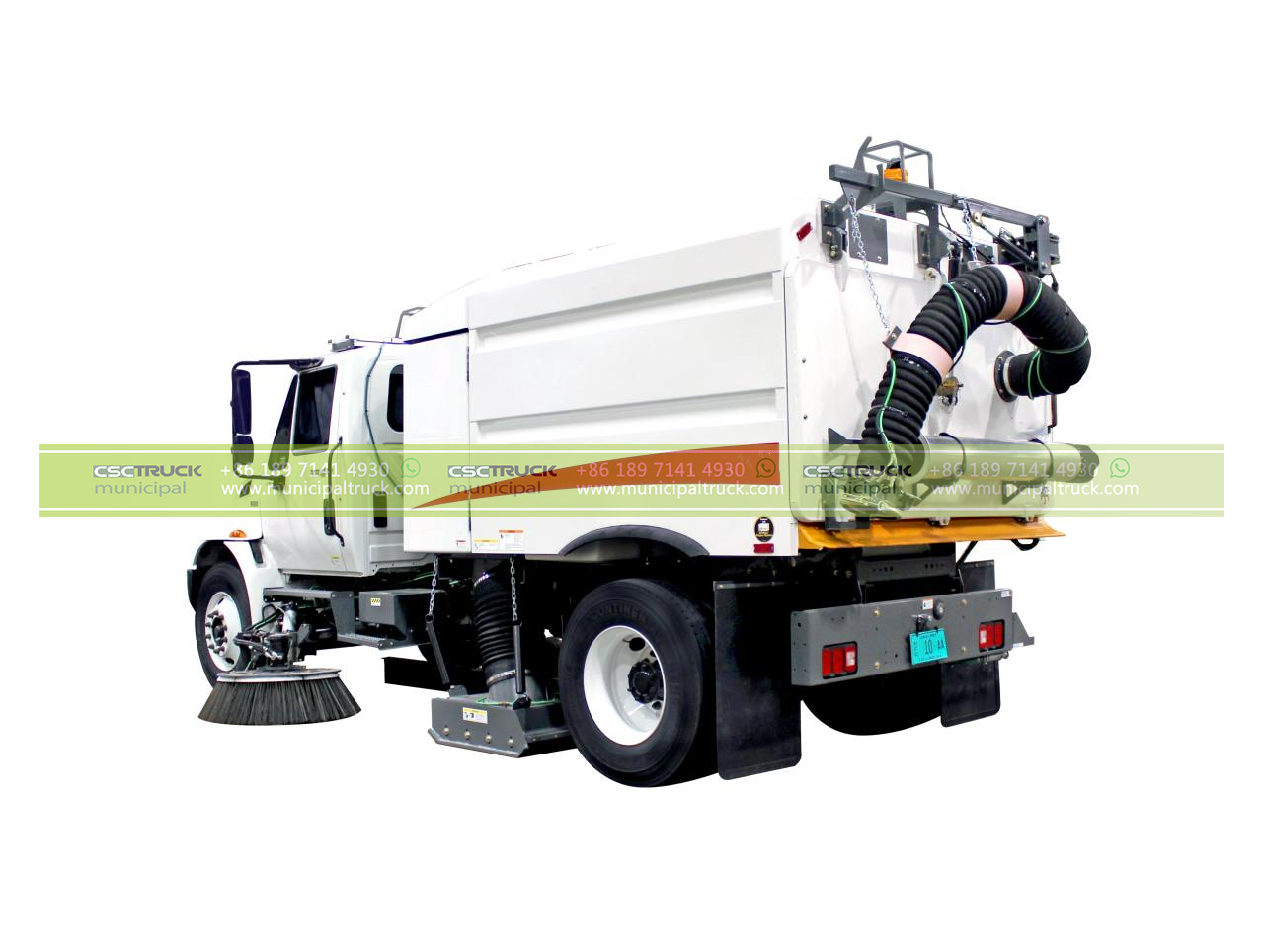
Environmental Implications and Sustainability
In an era where sustainability is a global imperative, the Combined Sweeper Jetter Truck stands out as an eco-friendly solution. By optimizing cleaning processes and reducing the need for multiple vehicles, it contributes to a reduction in carbon emissions. Additionally, many of these trucks are designed with advanced filtration systems that trap pollutants and particulate matter, preventing them from entering the environment.
Furthermore, the water recycling capabilities of these vehicles add another layer of sustainability. The high-pressure water jets used for cleaning generate wastewater laden with debris. However, instead of disposing of this water, many Combined Sweeper Jetter Trucks incorporate systems that filter and recycle it. This not only conserves water but also reduces the strain on wastewater treatment plants.
Challenges and Considerations
While the Combined Sweeper Jetter Truck presents a promising solution to modern urban maintenance challenges, its adoption is not without challenges. Initial costs of procuring and maintaining these specialized vehicles can be substantial, particularly for smaller municipalities with limited budgets. However, proponents argue that the long-term savings in labor, time, and resources can offset these initial expenses.
Moreover, proper training for operators is essential. Operating a Combined Sweeper Jetter Truck requires proficiency in handling both sweeping and jetting functions, as well as a keen understanding of the vehicle’s technology. Comprehensive training programs are necessary to ensure that the full potential of these trucks is realized and that maintenance tasks are executed accurately and safely.
The Road Ahead: Paving the Way for Smart Cities
As urbanization continues to reshape the global landscape, the demand for efficient infrastructure maintenance solutions intensifies. The Combined Sweeper Jetter Truck is not just a vehicle; it’s a step towards smarter, cleaner, and more sustainable cities. Its integration of dual cleaning solutions aligns with the concept of smart cities, where technology is harnessed to enhance the quality of life for residents.
The data generated by these trucks, such as cleaning patterns, debris accumulation trends, and drainage system conditions, can be leveraged to optimize maintenance schedules and resource allocation. This data-driven approach maximizes the impact of urban cleaning efforts while minimizing their environmental footprint.
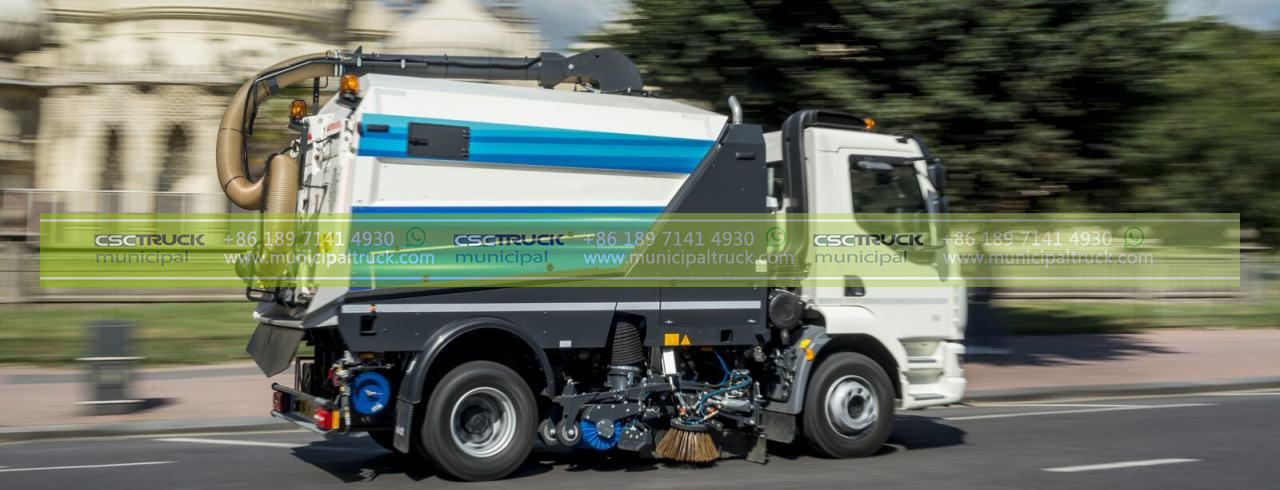
Navigating the Implementation Journey
While the concept of the Combined Sweeper Jetter Truck is compelling, its successful integration into existing urban maintenance systems requires careful planning and execution. Municipalities considering the adoption of these vehicles should follow a structured implementation journey to reap the maximum benefits.
1. Assessment and Analysis: Before introducing Combined Sweeper Jetter Trucks, municipalities should conduct a comprehensive assessment of their maintenance needs, existing equipment, and operational challenges. This analysis will help identify the areas where these trucks can have the greatest impact.
2. Customization and Procurement: Every city has unique requirements. Working closely with manufacturers to customize the trucks to meet specific needs is crucial. Factors like road conditions, climate, and drainage system complexities should be considered during the customization process. Once the specifications are finalized, procuring the trucks can take place.
3. Training and Skill Development: Proper training is the linchpin of successful implementation. Operators should be well-versed in both sweeping and jetting techniques. Training programs can be conducted by manufacturers or third-party organizations that specialize in heavy equipment operation. Continuous skill development ensures that the trucks are utilized to their full potential.
4. Pilot Projects and Data Collection: Consider starting with pilot projects in select areas of the city. This allows for real-world testing and fine-tuning of the trucks’ operations. Simultaneously, data should be collected and analyzed to gauge the impact on maintenance efficiency, environmental factors, and cost savings.
5. Public Awareness and Engagement: The introduction of Combined Sweeper Jetter Trucks can serve as an opportunity to engage with the public. Municipalities can educate residents about the benefits of the new technology, how it contributes to a cleaner environment, and potential traffic disruptions during cleaning operations.
6. Performance Evaluation and Optimization: Regular performance evaluations should be conducted to assess the effectiveness of the trucks. Monitoring key metrics such as cleaning coverage, drainage system condition, and operational costs will provide insights into areas for improvement and optimization.
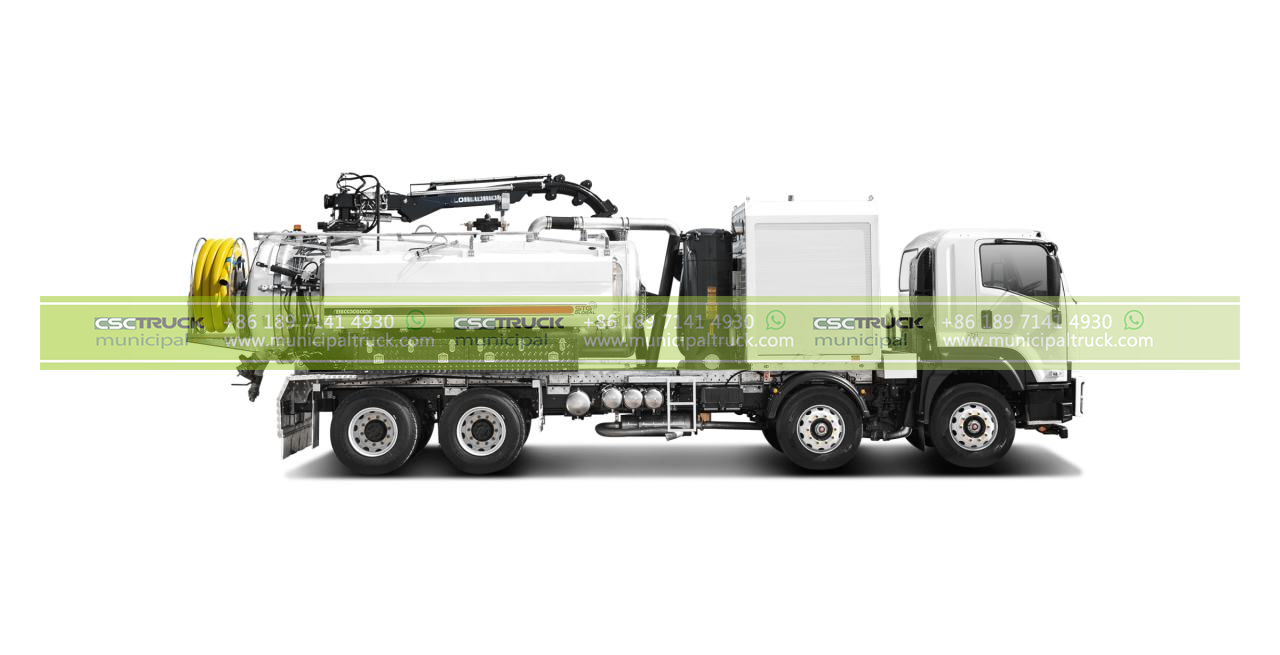
A Blueprint for Future Urban Maintenance
The adoption of Combined Sweeper Jetter Trucks is a testament to human ingenuity addressing pressing urban challenges. However, the journey doesn’t end with the successful integration of these vehicles. It sets the stage for a broader revolution in urban maintenance.
As technology advances, the capabilities of these trucks will likely evolve as well. Innovations such as autonomous operation, real-time data analytics, and remote monitoring could become integral components of these vehicles, further enhancing their efficiency and effectiveness. Imagine a future where Combined Sweeper Jetter Trucks are not just cleaning streets, but also providing valuable data that informs urban planning and infrastructure development.
Global Collaboration for Cleaner Cities
The impact of the Combined Sweeper Jetter Truck extends beyond individual cities and municipalities. It sets a precedent for global collaboration in addressing urban challenges. As the world becomes more interconnected, sharing best practices, experiences, and technological advancements can lead to cleaner and more sustainable cities worldwide.
International forums, conferences, and partnerships can facilitate the exchange of knowledge and expertise related to urban maintenance. Developing nations, in particular, can benefit from the insights of more developed urban centers, helping them leapfrog over traditional methods and adopt innovative solutions more rapidly.
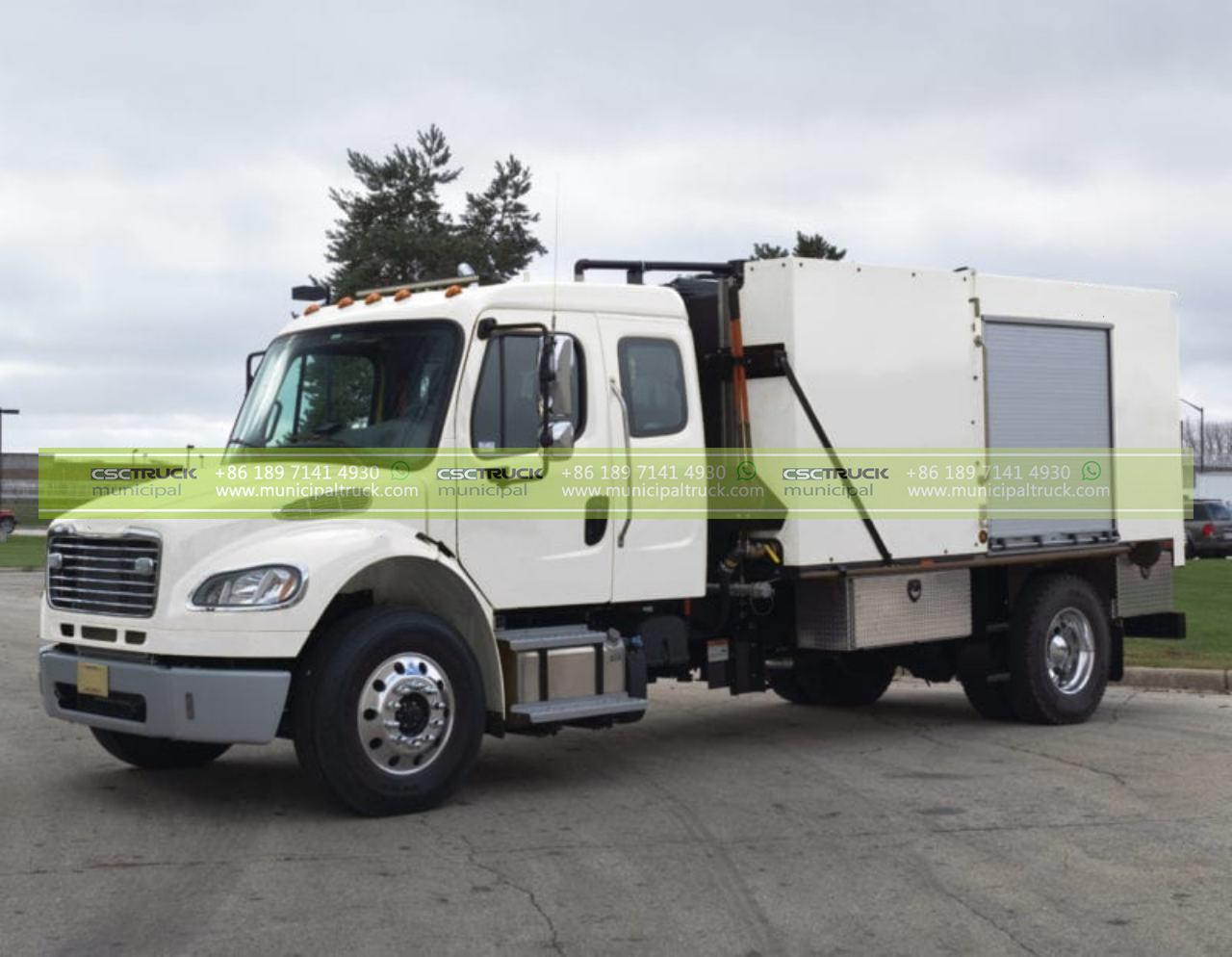
In Conclusion
The Combined Sweeper Jetter Truck represents a pivotal moment in urban maintenance history. Its ability to seamlessly integrate sweeping and jetting functionalities elevates maintenance practices to new heights of efficiency, effectiveness, and sustainability. As cities continue to evolve and expand, innovative solutions like these will play a crucial role in creating cleaner, more livable environments.
The journey from concept to implementation might present challenges, but the rewards are substantial: reduced carbon emissions, improved public health, and enhanced urban aesthetics. Moreover, these trucks serve as a testament to human adaptability and innovation in the face of evolving urban landscapes.
As municipalities around the world embrace this technological evolution, they are not only investing in vehicles but also in a cleaner and brighter future for their residents. The Combined Sweeper Jetter Truck isn’t just a tool; it’s a symbol of progress, a blueprint for smarter cities, and a reminder that even the most mundane tasks can be transformed into remarkable opportunities for positive change.
Contact us for this municipal truck or similar trucks: [email protected] Call us or What's APP us: +86 189 4292 3930

